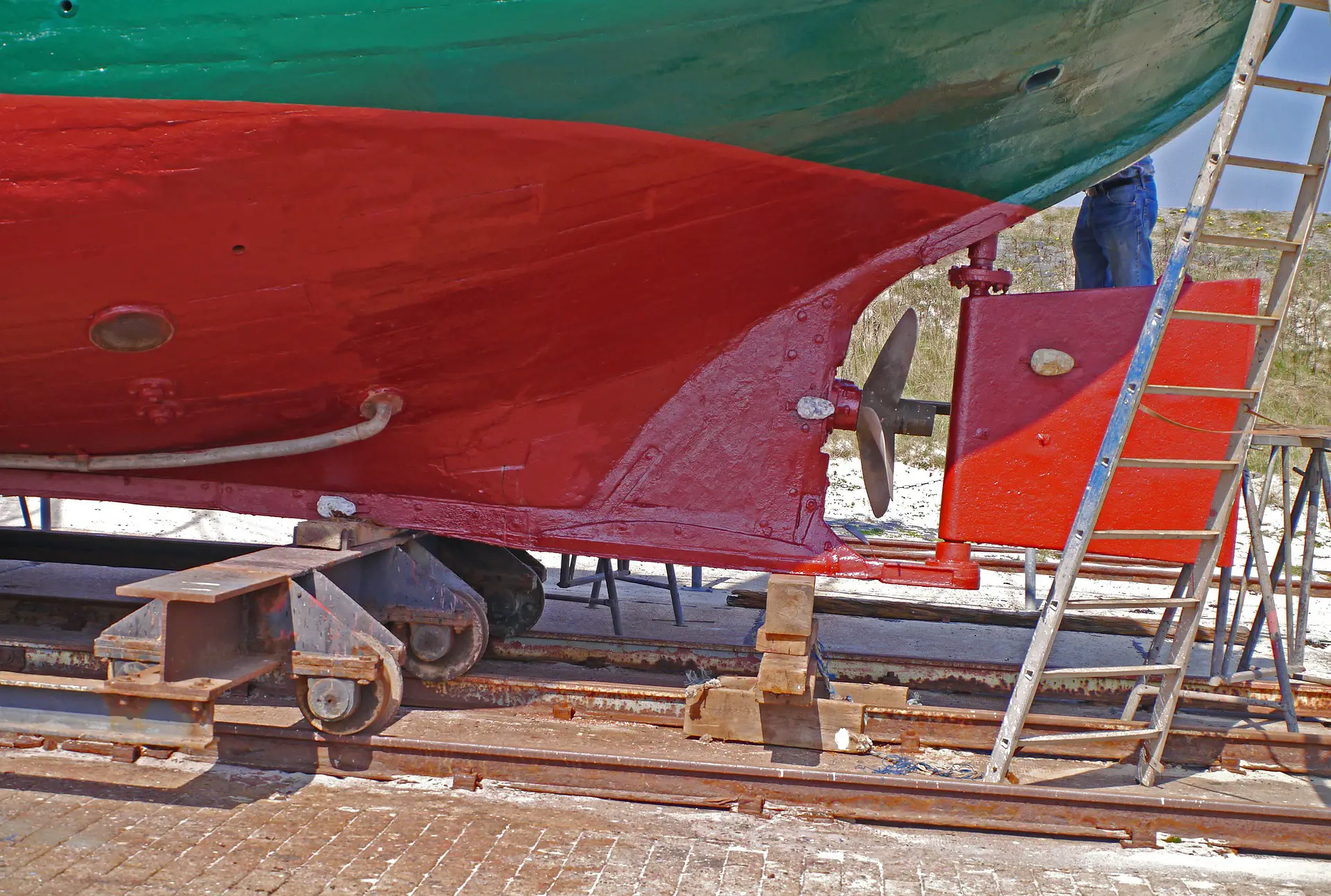Steering a vessel is a simple as turning a helm-mounted wheel to the left or the right. However, the complexity of moving the watercraft in either direction is far more complicated than it appears. While not every boat is fitted with rudders, the watercraft rely on them heavily for safe navigation. Rudders are found on ships of varying sizes and are used in fresh or saltwater. Here is what you need to know about a boat rudder.
What Does A Rudder Look Like
The shape of a boat rudder varies based on the vessel in which it is fitted. On large ships, the rudder is massive and rectangular.
Unlike ships, sportfishing vessels and sailing vessels are fitted with small boat rudders. In addition to the difference in size, the rudders are most often pentagons.
In some situations, the rudder of a ship is visible. The ability to see the rudder is based on the vessel’s load. The watercraft sits higher in the water column when free of cargo, thus exposing the rudder. On sailing vessels and boats, this is never the case.
What Is a Rudder And What Does It Do
It is essential to understand what is a rudder. A rudder is the primary means of steerage on inboard and sailing vessels. Rudders are apparatuses that connect to the stern of the boat beneath the surface. When the operator turns the wheel, the rudder shifts direction. As a result of drag, friction, and force, the rudder disrupts water flow. The disruption of water flow causes the bow to the right or left. Vessels are capable of being equipped with one or more rudders. Therefore, the boat rudder direction directly affects the movement of the watercraft port or starboard.
Rudders for boats are fundamental in controlling the boat’s direction when asking what a rudder does. An inboard or sailing vessel which lacks a rudder would be nearly impossible to steer. All inboard engine boats are fitted with an inboard rudder positioned aft of the propulsion. These types of vessels are often called a rudder boat.
Who Controls The Rudder On A Boat
The boat’s rudder is manipulated by the operator standing at the wheel, otherwise known as the helm.
When the ship’s wheel is turned left or right, the rudder beneath the water’s surface turns. The ship rudder movement pushes the bow to port or starboard.
.After the operator is satisfied with the turn and the course is adjusted, the wheel and rudder are turned to center. The center alignment maintains a straight path.
When the wheel of a vessel is turned, a chain of events occurs, thus moving the rudder’s direction. Pressure is applied to the rudder via cables, hydraulics, or electronic methods.
How Does A Steering Wheel Control A Rudder
A steering wheel controls a rudder by manipulating the rudder from left to right by the direction the wheel is turned.
When the operator turns the wheel right, the rudder angles change and turn the boat right. The same series of events occurs when turning the wheel in the opposite direction, thus turning the boat left.
While turning the wheel is simple, a series of processes are required to sway the boat in the direction requested by the operator.
How Is A Rudder Attached To A Boat
The attachment of a boat rudder varies based on the type of vessel. On boats, rudders contain one point of connection when compared to ships. Ships most frequently connect to the boat’s hull on the top and bottom.
Remember, the rudder must be capable of turning left and right. A shaft connects the rudder to the inside of the hull. Bearings are in place to allow the rudder to move without becoming jammed. As a result of the force applied, the connections are stout to prevent the rudder from breaking free.
Can You Steer A Boat Without A Rudder
We, unfortunately, have seen a vessel lose control of its rudder. Let’s clarify; the rudder did not physically fall off of the boat, but rather the steering wheel was no longer capable of turning the rudder due to a hydraulic leak.
When the operator loses control of the rudder, the boat turns sharply port or starboard. The turn results from the rudder’s inability to remain stabilized. It moves freely despite the captain manipulating the wheel.
In a situation where control of the rudder is lost, the operator must rely on alternative steering methods.
Twin Engines
Watercrafts equipped with twin engines have the advantage compared to single-engine vessels. Manipulate twin engines in opposite directions for close-quarter maneuvering without a rudder. The engines’ thrust is placed in opposite directions, thus causing the boat to turn rapidly.
The captain must rely on wind and throttle jockeying in open waters away from docks. Allow the wind to push the bow while powering up the engine opposite of the direction the boat must aim.
Single Engine
Single-engine watercraft are the most challenging to navigate when a rudder is lost. The captain must shift the vessel frequently between forward and reverse to maintain steerageway. In most situations, a tow is necessary.
Why Is The Rudder Important
As a rudder glides through the water, force applied in either direction causes friction, thus turning the boat. The rudder is essential because the operator loses the ability to turn the watercraft by utilizing the onboard ship’s wheel. Without a rudder, the ship becomes challenging to maneuver.
A Boat Rudder Is Crucial To The Operation Of Inboard And Sailing Vessels
It is essential to understand the significance of a boat rudder. Boat rudders are fundamental in controlling the vessel’s direction through the water. Loss of rudder control becomes a catastrophic event and often requires assistance from towboats. The next time you see a boat rudder, bring everyone up to speed on the importance.






